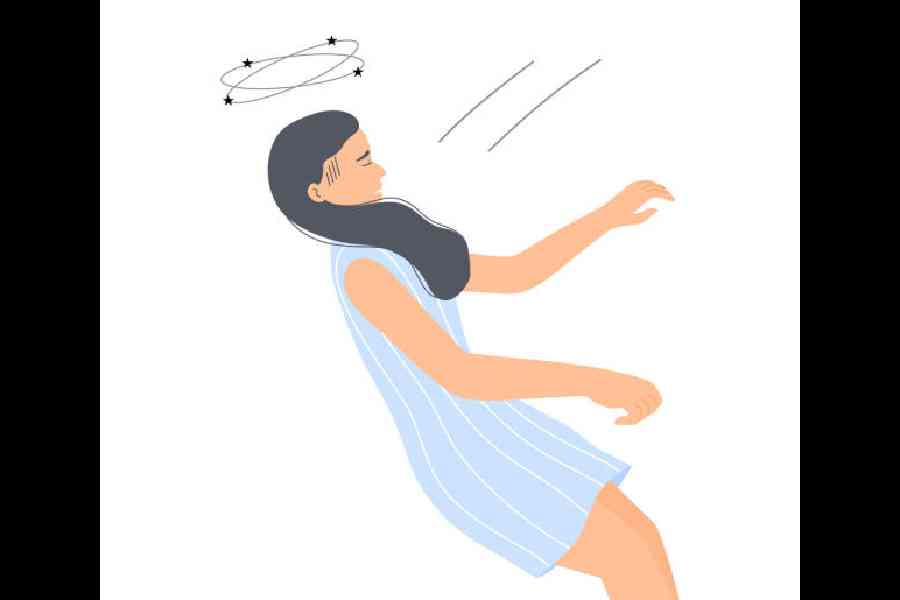Syncope is a fancy medical term for fainting, a transient loss of consciousness that can occur either never, once in a lifetime or frequently. The “fainting” may be preceded by warning signs of presyncope, when the person feels lightheaded (not giddy) and knows they will faint. A person who faints sinks silently to the ground or falls flat. They may hit a hard object or furniture during the process and injure themselves. There is no cry, noisy breathing or thrashing of the arms or legs. It is quite different from a seizure.
Fainting can occur:
l In older people with or without blood pressure medication. They can faint because their blood vessels are less pliant with age and have difficulty adjusting to sudden changes in posture
l It can occur because of dehydration, especially in hot and humid climates
l Soldiers on guard duty or even children standing still for long periods can
develop a pooling of blood in the legs (due to gravity) and faint
l The carotid arteries run to the brain from both sides of the neck.
Pressure on these arteries from a tight collar or necktie can cause
fainting, especially if there is a sudden neck movement
l Some faint when seeing blood, getting an injection or donating blood
• Sudden and unexpected trauma, stress or pain, such as being hit
l Some faint while passing motion
l Older men can faint while passing urine. This is post-micturition syncope.
Recovery from a faint is spontaneous and rapid. If you feel that you
are going to faint, lie down and, if possible, elevate both legs. If you are sitting, place your head between your knees. Drink plenty of fluids. Do not try to stand.
Syncope can be associated with various heart diseases. The heartbeat may be too rapid, too slow or irregular. This interferes with regular blood supply to the brain and causes fainting. If consciousness is not restored in two to five minutes, parts of the brain lose function and die. Areas to be affected first are vision, speech and muscle coordination. Loss of blood flow to the brain for seven to eight minutes causes irreversible damage and death. CPR (cardiopulmonary resuscitation) prevents this. Everyone should learn the basics of CPR.
The functioning of the heart and the heart rate are affected by hypo and hyperthyroidism, elevated lipid profiles, diabetes, smoking, alcoholism, and liver and kidney disease. Sometimes, people are prescribed medication like diuretics or antihypertensives, which can cause a postural fall in blood pressure and fainting. They can also cause low sodium or high potassium levels in the blood. Electrical conduction in the heart is affected, impacting the heart rate and blood pressure. As these change, fainting can occur.
Fainting is evaluated by checking the sitting, standing and supine blood
pressure, an ECG, and an echocardiogram. An angiogram may be needed to check
for blocks in the heart’s blood vessels. Sometimes the heart rate needs to be monitored for 24 hours or more. This is done by wearing a Holter device. It picks up any transient irregularities.
Blood tests for electrolytes, diabetes, thyroid functions, and liver and kidney disease also need to be done to determine if there are any correctable causes of the irregular heart rate. Treatment involves medication to control the blood pressure and heart rate. If this does not work, a pacemaker may be needed to regulate the heart rate.
The best type of prevention for syncope is walking regularly. It makes the heart work well and improves its efficiency. It increases the supply of blood to the heart and strengthens the heart muscles. Walk for about 150 minutes a week — that breaks down to a brisk 20-minute walk daily— for a long, healthy life without syncope.
The writer has a family practice at Vellore and is the author of Staying Healthy in Modern India. If you have any questions on health issues please write to yourhealthgm@yahoo.co.in











